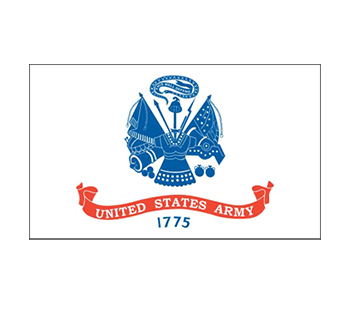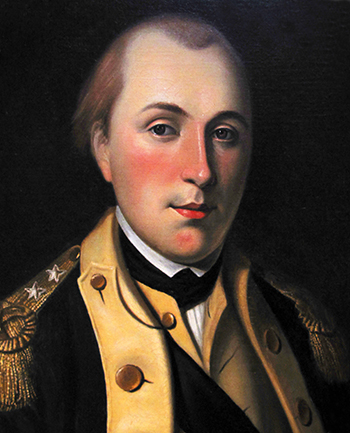
|
Gilbert du Motier, Marquis de Lafayette |
 |
|||
| Rank, Service | ||||
Major General, U.S. Army Lieutenant Général, French Army |
||||
| Veteran of: | ||||
|
||||
| Tribute: | ||||
Marie-Joseph Paul Yves Roch Gilbert du Motier de La Fayette, Marquis de La Fayette was born on September 6, 1757, in Château de Chavaniac, Kingdom of France. He was commissioned a Second Lieutenant in the Musketeers of the French Army in May 1771, at only 13 years of age, and was later commissioned as a Lieutenant in the Noailles Dragoons in April 1773. Lafayette was promoted to Captain in the Dragoons in September 1775, and Silas Deane enlisted Lafayette into the American Continental Army while still in France on December 7, 1776, with the rank of Major General. He departed for America in April 1777, and landed in South Carolina on June 13, 1777. The Continental Congress officially commissioned Lafayette as a Major General on July 31, 1777, and he joined General Washington's staff in August 1777. Maj Gen Lafayette served in combat during the Battle of Brandywine near Chadds Ford, Pennsylvania, on September 11, 1777, where he was shot in the leg. After recuperating for 2 months from his wounds, he led a Division during the Battle of Gloucester at Gloucester City, New Jersey on November 25, 1777, resulting in an American victory. He then joined General Washington at Valley Forge, Pennsylvania, during the winter encampment from December 1777 to May 1778. He participated in combat during the Battle of Barren Hill at Barren Hill, Pennsylvania, on May 20, 1778, and then during the Battle of Monmouth near Monmouth Court House, New Jersey, on June 28, 1778. Maj Gen Lafayette next participated in the Battle of Rhode Island at Aquidneck Island, Rhode Island, on August 29, 1778, and he then returned to France on leave in January 1779. He left France in March 1780, and returned to America on April 27, 1780. He took command of another American Division in the summer of 1780, and later participated in the Yorktown Campaign and the Siege of Yorktown between June and October 1781. Maj Gen Lafayette left America for France on December 18, 1781, and rejoined the French Army as Maréchal de camp in early 1782. He visited the United States in 1784-1785, and Maryland's legislature honored him by making him a natural born Citizen, which in turn made him a natural-born citizen of the United States after the 1789 ratification of the U.S. Constitution. Connecticut, Massachusetts, and Virginia also granted him citizenship. After returning to France, he participated in the French Revolution as leader of the National Guard from 1789 to 1791, and he was promoted to Lieutenant General in June 1791. He took command of the Army of the North of the French Army in July 1792, but he was forced to leave France after the monarchy was abolished in August 1792. He was captured by the Austrians soon after his escape from France in September 1792, and he was held prisoner until his release in September 1797. He returned to the United States for a long visit from July 1824 to September 1825 where he received many honors throughout the country for his service in the American Revolutionary War. He was again made commander of the National Guard in France in July 1830 during the July Revolution, and his post was abolished on December 24, 1830. Marquis de Lafayette died on May 20, 1834, and was buried at Picpus Cemetery in Paris, France. He was buried under soil from Bunker Hill by his son, and an American Flag always flies over his grave. |
||||
|
||||

